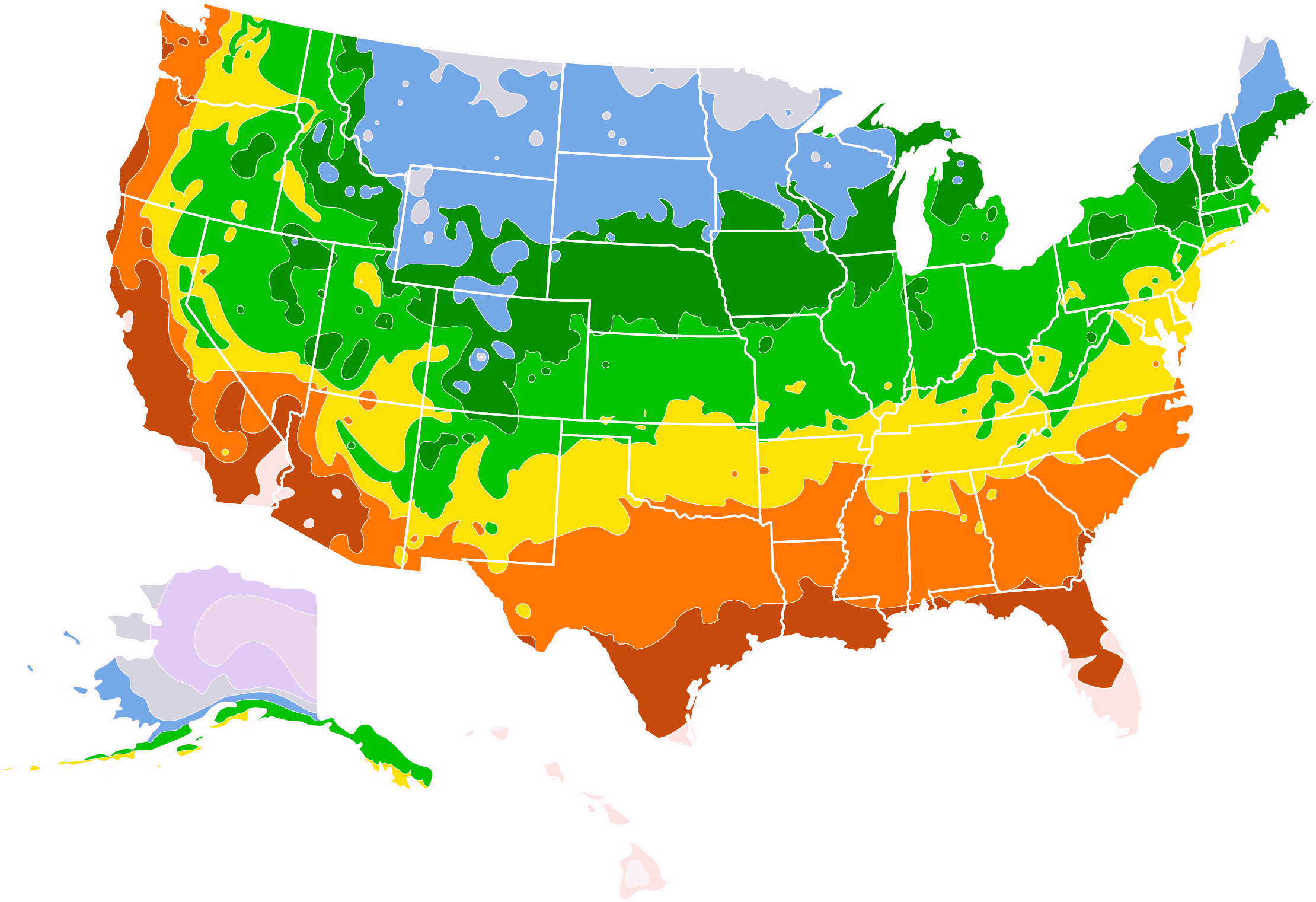- Home >
- Evergreen Trees >
- Eastern Red Cedar Trees
Eastern Red Cedar Trees for Sale
Juniperus virginiana — commonly referred to as the eastern red cedar tree or the eastern juniper — is a slow-growing variety of juniper that ranges from the Gulf of Mexico to Southeastern Canada. Its pyramid shape provides an excellent natural wind block, and it adds a unique touch of beauty to the landscape.
- These sun-loving trees grow best in open spaces.
- Closely related to the Rocky Mountain juniper and Ashe juniper.
- Mature trees can grow to a height of over 50 feet.
Enter your zip code to find nearby stores that may carry this plant.
Plant Care
Sunlight

Eastern red cedars can tolerate some shade, but these trees grow best when they get at least six hours of direct sunlight per day.
Watering
Immediately after planting, eastern red cedar trees need to be watered every other day. Two weeks after planting, they only need to be watered once per week.
Fertilizing

While these trees generally do well without the use of fertilizer, a balanced product that’s designed for evergreens can help support growth.
Planting and Care
Planting instructions
Eastern red cedar trees prefer a planting site that receives full to partial sun. Clear all grass, rocks, and other debris before digging a hole twice as wide and equally as deep as the roots of your young tree. Then, carefully place the roots of the tree into the hole, spreading soil around and creating a mound. Once the tree roots are covered with soil and lightly patted down, pour three to five gallons of water on the mound to settle the soil. If the soil sinks, add more soil and water.
Watering and nutrients
The eastern red cedar will not tolerate excessively wet soil. Water newly planted trees every other day after planting. After the first two weeks, you may reduce watering to once a week. Watering is not required in the winter months unless the season is particularly dry. Be sure to water thoroughly once a week (as opposed to light waterings throughout the week) to ensure a healthy, deep-rooted, and drought-resistant tree.
Pollination
The eastern red cedar is primarily pollinated through wind-dispersion. The species is dioecious, meaning each tree is either male or female. Male specimens produce small yellow flowers, while the female flowers are green. The male trees produce brown pollen cones. The females produce berry-like cones that contain one to four seeds each once pollinated. The seed pods mature over six to eight months, eventually providing a food source for birds in exchange for the dispersal of seeds.
Pests and diseases
Eastern red cedar trees should be planted at least 500 feet away from apple trees. Cedar-apple rust — a fungal infection that causes leaf spots and fruit damage — can show up wherever the two tree species co-exist. The disease itself has minimal effect on the actual juniper, but it will ravage your apple trees. Eastern red cedars are generally free from pests and diseases. However, they are susceptible to bagworms. These little pests should be picked off and drowned in soapy water before more eggs hatch.
FAQs
How large do eastern red cedar trees grow?
Eastern Red Cedars have an average height of 40 feet, while some individuals may reach over 80 feet. Branches will span to a width of about 15 feet wide. They are extremely rugged and long-lived trees—many individuals live over 500 years, while the oldest reported specimen was over 900 years old. Their height and girth creates an excellent natural wind block when used in landscaping, and their deep root system helps prevent erosion around your home.
How fast do eastern red cedar trees grow?
In prime conditions, mature trees will grow around one to one and a half feet per year. In 20 years, you can expect your eastern red cedar to be anywhere from 14 to 18 feet tall, depending on your climate and region. Because the species is a coniferous evergreen, the foliage will continue growing year round. The needle-like leaves are pure green in the summer, while the winter may turn the foliage brown or purple.
Are eastern red cedar trees invasive?
These trees are considered invasive in some areas, depending on the particular cultivar of eastern red cedar and the region in which it is growing.. The species is sometimes referred to as nature’s “first responder” or “pioneer species,” because the eastern red cedar will quickly populate abandoned fields, neglected spaces, and eroded land. They can even thrive alongside highways, near new construction, and in other disturbed areas.
How far apart should eastern red cedars be planted?
The eastern red cedar trees should be planted 12 feet apart for a single row and 14 feet apart in a double row of trees. For more rows, plant each tree at least 20 ft apart. If planting the trees near your house, provide a buffer of at least 20 feet to prevent any future damage, when in doubt, give the trees a little extra room.
Compare Similar Products
Customer Reviews
 Nice trees
Nice treesLook great out of the box ...have not put them in the ground yet...









